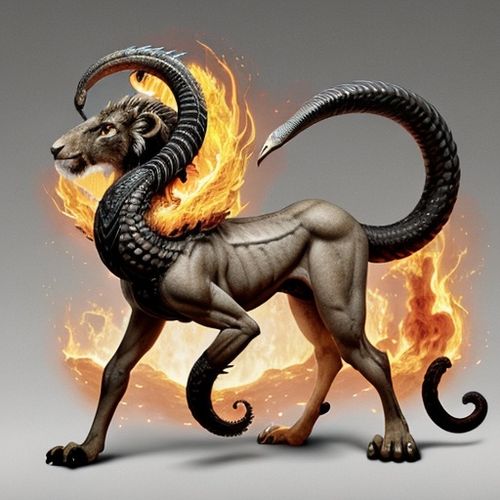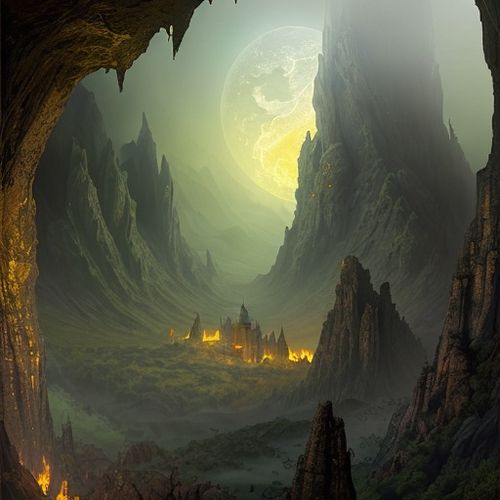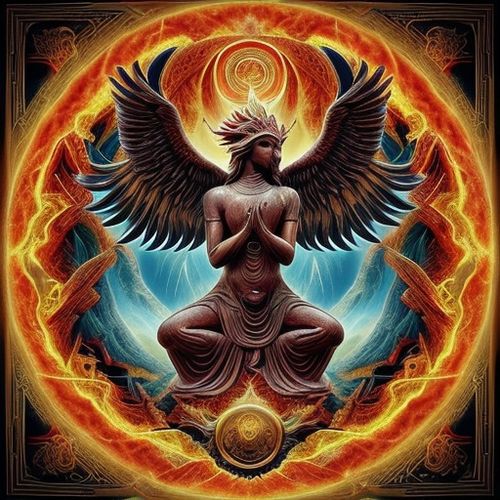The ancient myth of the phoenix rising from its own ashes has captivated human imagination for millennia. This powerful symbol of destruction and rebirth finds eerie parallels in modern systems theory, where complex systems - from ecosystems to civilizations - appear to follow cyclical patterns of collapse and regeneration. What Eastern philosophy called the "Phoenix Nirvana Cycle" now emerges as a compelling framework for understanding the turbulent transformations shaping our 21st century world.
Across the bamboo annals of Chinese history, scholars observed how dynasties would rise to glorious heights only to succumb to corruption and decay, making way for new regimes to emerge from the chaos. This pattern mirrored the Taoist concept of yin and yang - how every extreme contains the seed of its opposite, how death nourishes new life. The phoenix became the perfect metaphor for this eternal return, its fiery demise not an ending but a purification necessary for renewal.
Modern complexity science has given this ancient wisdom startling validation. Researchers studying systems from tropical rainforests to stock markets have identified what they call "adaptive cycles" - four distinct phases that ecosystems and organizations repeatedly pass through. The growth phase (rapid expansion), conservation phase (increasing rigidity), release phase (creative destruction), and reorganization phase (innovation) form an endless loop that looks remarkably like the phoenix's legendary life cycle.
We see this cycle playing out today in what economists call "creative destruction." Industries that once seemed invincible - from fossil fuels to traditional retail - now face existential threats as new technologies emerge. The very forces that made them successful (scale, infrastructure, market dominance) become liabilities when paradigms shift. Like the phoenix accumulating twigs for its nest, these systems build complexity until they can no longer sustain themselves, requiring transformation.
The climate crisis presents perhaps the most dramatic example of the Phoenix Nirvana Cycle in action. Earth's biosphere has undergone at least five mass extinctions, each wiping out 70-90% of species. Yet from these catastrophes emerged explosions of biodiversity as surviving organisms filled empty niches. Today's anthropogenic climate change, while terrifying in its implications, may represent another such transition point where human civilization must either adapt or perish.
Psychological research reveals individuals experience personal phoenix cycles after traumatic events. Post-traumatic growth studies show how people frequently develop greater resilience, deeper relationships, and renewed purpose after surviving crises. The very suffering that destroys one version of the self creates space for a wiser incarnation to emerge. Therapists now intentionally use this framework to help clients reframe their darkest moments as potential rebirths.
Organizational theorists apply phoenix cycle principles to business transformations. Companies like Apple and Nintendo famously faced near-collapse before reinventing themselves. The pattern holds true for cities as well - consider Detroit's bankruptcy and subsequent tech-driven revival, or Medellín's transformation from drug capital to innovation hub. These cases demonstrate how systemic breakdown, when navigated skillfully, can become breakthrough.
The pandemic provided a global-scale phoenix moment, forcing societies worldwide to confront vulnerabilities in healthcare systems, supply chains, and social contracts. While the human cost remains tragic, the crisis accelerated remote work adoption, mRNA vaccine development, and environmental awareness - changes that might have taken decades otherwise. Like forest fires that seem catastrophic yet stimulate new growth, the pandemic cleared space for societal reinvention.
Eastern alchemy viewed the phoenix cycle as a spiritual process of distillation - burning away impurities to reveal essential nature. Modern neuroscience echoes this through the concept of "synaptic pruning," where adolescent brains eliminate weak neural connections to strengthen important ones. Both frameworks suggest destruction serves an evolutionary purpose, removing what no longer serves to make way for more advanced configurations.
Urban planners now intentionally design cities with phoenix cycles in mind, creating flexible infrastructure that can adapt to climate change and technological shifts. The "sponge city" concept transforming flood-prone Chinese municipalities exemplifies this approach, turning vulnerability into opportunity by designing systems that benefit from periodic inundation rather than resisting it.
Silicon Valley's "fail fast" mentality represents a corporate embrace of phoenix principles, recognizing that early small-scale failures prevent larger collapses later. This stands in stark contrast to traditional business models that prioritized stability above all, often delaying necessary transformations until crises became unavoidable. The difference mirrors that between controlled burns preventing wildfires and the catastrophic infernos that follow long fire suppression.
As artificial intelligence reshapes the global economy, we stand at another phoenix moment. Entire professions face obsolescence while new forms of work emerge. Educational systems designed for industrial-era factories must reinvent themselves for the AI age. The turbulence feels disruptive because it is - we're witnessing the combustion phase before new systems crystallize. History suggests the societies that embrace this creative destruction will thrive in the next cycle.
The Phoenix Nirvana Cycle offers more than just an explanatory framework - it provides an empowering narrative for turbulent times. Understanding that collapse often precedes renewal can help individuals and societies face transitions with wisdom rather than panic. The key lies in recognizing the difference between terminal endings and transformational ones, between death without resurrection and the sacred fires of rebirth.
As our planet faces converging ecological, technological and social upheavals, this ancient myth merged with modern systems thinking may hold the key to navigating what comes next. The phoenix never fears the flames because it knows what must burn will burn, and from those ashes something new and necessary will rise.

By James Moore/Apr 29, 2025

By Lily Simpson/Apr 29, 2025

By Emma Thompson/Apr 29, 2025

By Natalie Campbell/Apr 29, 2025

By William Miller/Apr 29, 2025

By Grace Cox/Apr 29, 2025

By James Moore/Apr 29, 2025

By Eric Ward/Apr 29, 2025

By Noah Bell/Apr 29, 2025

By Victoria Gonzalez/Apr 29, 2025

By Natalie Campbell/Apr 29, 2025

By Eric Ward/Apr 29, 2025

By Sarah Davis/Apr 29, 2025

By Emma Thompson/Apr 29, 2025

By Megan Clark/Apr 29, 2025

By Lily Simpson/Apr 29, 2025

By William Miller/Apr 29, 2025

By Rebecca Stewart/Apr 29, 2025

By Rebecca Stewart/Apr 29, 2025